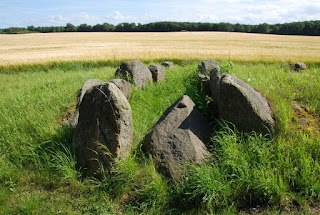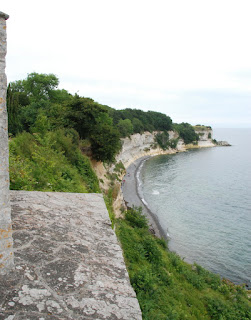The
campsite is, in theory, only 25 minutes from Calais port but we immediately
found that we had to make a diversion to get around a ‘route barreé’, one of
many that we have made during this holiday. Unfortunately, there was no signed
diversion so we had to let the satnav guide us down some rather narrow lanes.
Security
was very tight at the port with armed police and army on duty and many vehicles
were stopped to be searched for illegal immigrants but, fortunately, we were
not. The checks took longer than normal and certainly longer than at Dover but
we were still in plenty of time for the ferry. We were more than 10 minutes
late leaving and spent the crossing racing the DFDS ferry that was supposed to
leave 10 minutes after us but left before us. We lost. We then had the longest
ever wait to get off the ferry and must have been one of the very last vehicles
off. Good job that we weren’t in a hurry.
We
stopped at the Maidstone services on the M20 and just managed to squeeze into
the area reserved for caravans and motorhomes. Many of the places were taken by
cars and we saw a number of motorhomes and caravans that had to either leave
without stopping or park in inappropriate places in the car park. A parking enforcement
man walked passed me and I pointed out the problem. His job was to check that
people were paying a charge if they were there for more than two hours but he
said that the management were aware of the problem and had plans to do
something about it – we will see! Much better signage is needed as I am sure
that many of the car drivers probably didn’t realise that the spaces were for
caravans.
As
always, the motorways were very busy but the journey was uneventful and we were
soon at the East Horsley campsite.
That
is the end of this sojourn. We are spending a few days here to visit our son,
daughter-in-law and grandson. On Sunday we are meeting friends at Lords to see
the Women’s Cricket World Cup Final. We were lucky to get tickets early (it is
now a sell-out) and were delighted to hear that England have made it through to
the final. We are really looking forward to watching the match from the
recently refurbished Warner’s Stand. Come On England!
We
thoroughly enjoyed our trip around Denmark. It is a lovely country, the people
are very friendly (everyone speaks English) and the archaeology and its
presentation is first class. If you are thinking of a visit to Denmark, we
thoroughly recommend it. Just be aware that, with a few exceptions such as
public transport and fuel, the cost of living is very high.
Have
fun!

















































